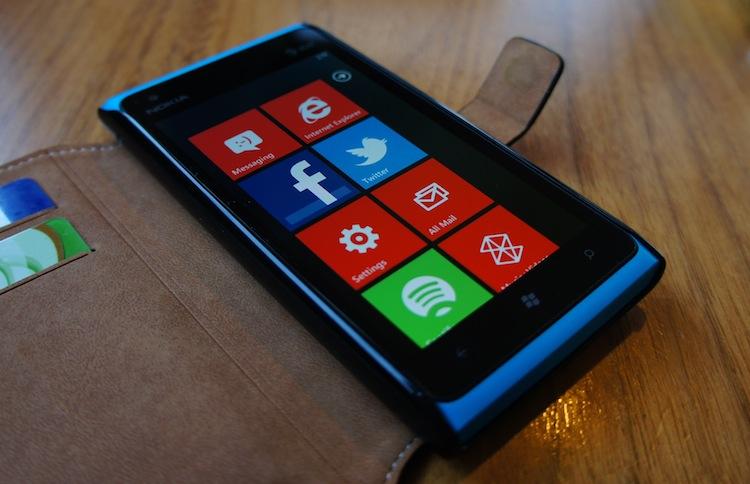
When Microsoft and Nokia joined forces last year, everyone knew the partnership could amount to something great. Nokia offered the differentiation and high-quality hardware Windows Phone needed to make it in the volatile smartphone market. And Microsoft was the mediator that could rekindle and reestablish Nokia's carrier relations here in the States.
In January, the two paired with AT&T to launch Nokia's flagship Windows Phone device, the Lumia 900 for a surprisingly low subsidized price of $99.99 with a two-year agreement. This undercut most of the Android flagships by at least $100 and offered a much higher quality device for roughly the same as – if not less than – most mid-range or low-end handsets.
Entering 2012 with such fanfare, I imagined this might be the year of Windows Phone, that Microsoft's offbeat platform would finally gain the support and adoption it so desperately needs to become a viable contender amongst the likes of Android and iOS. But we're over halfway through 2012 and Windows Phone's growth is still stunted by lack of carrier support, devices tagged with expiration dates and lack of competitive hardware.
Just yesterday, AT&T released a pink variant of the Lumia 900 and Nokia announced that the price of the handset has been adjusted to $50 with a two-year agreement. For prospective smartphone buyers, a Lumia 900 for $50 isn't a bad deal. It's a great phone and most certainly worth $50.
But I purchased my Lumia 900 the day after its official launch (because no local brick and mortar locations were actually open on Easter Sunday) and due to a software bug that affected wireless connectivity, Nokia placed a $100 bill credit on my next bill. Save for tax, my Lumia 900 was essentially free. (In fact, when I returned the Lumia, I was credited with $100 and Nokia effectively paid for half of the price of the HTC One X.)
Despite being free and a great device (the only thing I wasn't fond of was the camera), none of that was enough to keep me on Windows Phone. Not even the 100,000 applications in Windows Phone Marketplace was enough. And even though I enjoyed Windows Phone with the Lumia 900 (the sixth time's a charm!), I still couldn't justify keeping it over a more powerful and refined Android flagship.
But what will it take? What will Microsoft and Nokia have to do to pull me into the Windows Phone camp full-time?
For starters, I'm not going to even consider another Windows Phone before a Windows Phone 8 device is available. No one else should either, honestly. The full effects of Windows Phone 8 are worth waiting for, especially over, say, Windows Phone 7.8.
With Windows Phone 8 comes support for higher resolution display, multi-core architecture support, NFC and a new Start screen. (The new Start screen is also in 7.8, but that's just a consolation prize.) Buying any existing Windows Phone – or any that release prior to Windows Phone 8 – is effectively buying into obsolescence. And while Windows Phone doesn't necessarily need a multi-core processor, it wouldn't hurt to have more horsepower at my disposal, and it definitely wouldn't hurt to have a better GPU under the hood.
But it's not all about Microsoft and Windows Phone, it's also about Nokia's value proposition. I bought the Lumia 900 because I've been a fan of what the Finnish-based company has done previously with smartphone image sensors and their choice to use Carl Zeiss optics. The Lumia 900 was plagued with poor camera software and a glitch that threw off white balance in pictures. In short, it was a major disappointment.
But the Symbian-based PureView 808 handset shows exactly what Nokia is capable of, an entirely new level of mobile image sensing. And, as far as we can tell, Nokia intends to bring the PureView technology to Windows Phone. The minute they do, I'm sold – that is, if they can significantly slim PureView down. The PureView 808 is one chunky device and is primarily a camera, more so than a phone. A better balance between the two – like Windows Phone or Android over Symbian – and a slimmer profile would make the 808 a killer device.
And, of course, Nokia needs to keep up their topnotch hardware design – polycarbonate, unibody all the way.
So what will it take?
Each time I try Windows Phone, I like it more than before. Metro UI is growing on me, and a lot of the decision not to carry a Windows Phone is due to the hardware offerings. Windows Phone 8 will fix a lot of the software shortcomings. So for me to consider Windows Phone again, I will need a device with a dual- or quad-core processor (either Tegra 3 or Snapdragon S4 chipset, I'm not picky) and a serious GPU, PureView camera technology, a 720p (non-PenTile) display and beautiful Nokia unibody design. And, of course, I wouldn't complain if some bigger application and game titles found their way to Marketplace in the meantime.
Are any of you current Windows Phone users? If so, what is it that keeps you in the WP camp over Android or iOS? And if not, what is it about Windows Phone that turns you away?